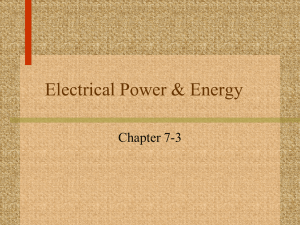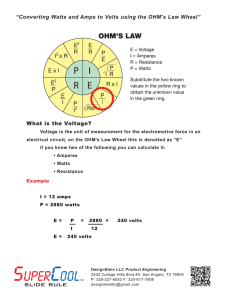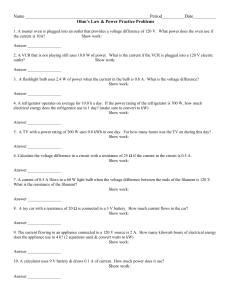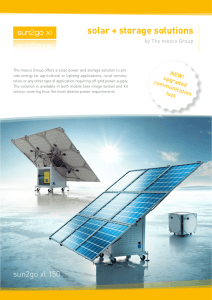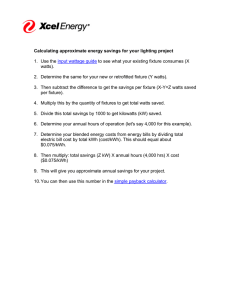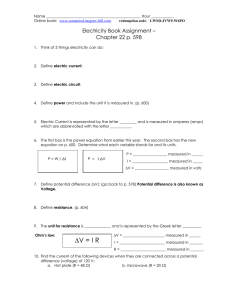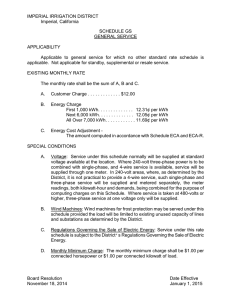Earth's Changing Environment Lecture 1
advertisement
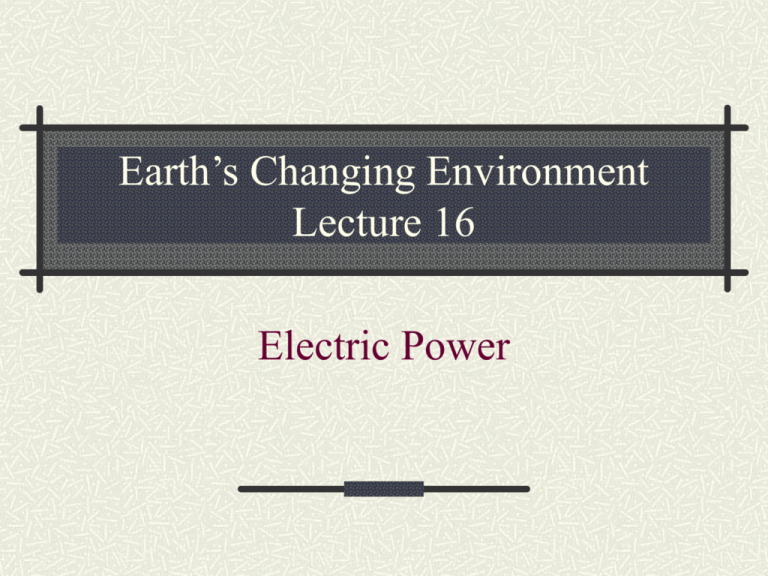
Earth’s Changing Environment Lecture 16 Electric Power Electric Power Generation Electric Power Plant Fuel Boiler Steam turbine Generator Air Pollution Thermal Pollution Transmission End Use Power Plant Capacity Consider a 1000 MW Capacity Plant W = Watt = unit of power So, a 1000 MW plant could provide a maximum of 1000 million watts of power or 1,000,000 kW of power Power Plant Energy Output Energy = power x time Express power in kilowatts (kW) and time in hours; so, energy will be in kWh or “kilowatt hours” During a 24 hour day, a 1000 MW plant could provide 1 million kW x 24 hours = 24 million kWh Power Plant Annual Output A typical coal-burning plant will operate at 70% capacity. Energy produced by a 1,000 MW plant =: 0.70 x 1x106 kW x 24 hours/day x 365 days = 6.13 billion kWh (annual) A typical residential customer consumes 12,000 kWh annually; so a 1000 MW plant can supply 0.5 million customers. Power Plant Energy Efficiency A typical 1000 MW plant burns enough fuel to release 3333 MW of thermal power. Efficiency = output power / input power = 1000 MW / 3333 MW = 30 % First Law of Thermodynamics Energy must be conserved; so, the other 2,333 MW is dumped as waste heat. Second Law of Thermodynamics Efficiency is always less than 100%. Some energy is always dumped as waste heat. Typically coal plant efficiency is 30%, but new plants may be 50% efficient. High efficiency plants conserve energy and reduce CO2 emissions. Let’s do some calculations. Electric Power Use Current, Voltage, and Resistance I = electric current (amps) V = electric voltage difference (volts) R = electric resistance (ohms) I=V/R Power Power (watts) = I (amps) V (volts) Power Losses Power Loss = I2 R
